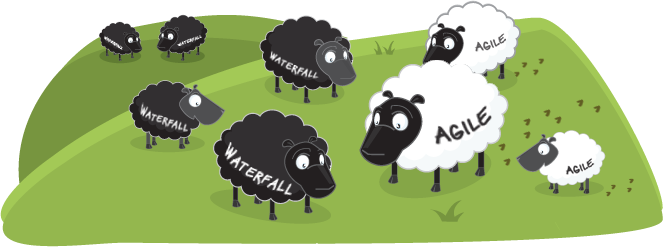When referring to communications and project management, you should be aware of what you do and what you should do. A lot of issues we suffer from are caused by poor communications. I can't stress enough how much of a positive or negative impact communications can have your project. What do I recommend you do? Here is an ordered list of communications methods. The first on the list is your last resort and the last on the list should be your preferred method.

First up is email. Yes, email. For most people, this is their preferred method of communications. Actually, it should be your last. Have you ever sent an email that was completely misunderstood? Did you ever write an email that showed up in someone's inbox it shouldn't? Has email become a complete time suck? Well, stop feeding the fire. Get your butt out of that chair and go talk to the person or people. Go to the bottom of the list and work your way up. You last resort is to send an email. By the way, don't be checking your email every 5 minutes. It's a compete time suck. Check it, at the most, once an hour. Make sure everyone knows you don't check your email that often. It helps manage expectations and could even encourage one-on-one communications (if it's that important)
 Our second to last communications choice is telephone. Yes, telephone. It's a little better than email. At least you can sense emotion if you're listening closely. When communicating, use the senses you have available to get indirect feedback. Try smiling when you talk on the telephone. I bet the other person will know you are. I know telephone calls can really dirupt you flow of work but it's better than someone showing up at your desk unannounced. Timing of communications is almost as import as the method used. Try to plan your telephone calls. Voicemail is nothing more than audio email, as far as I'm concerned. Make sure you leave your name and telephone at the beginning of the voicemail (and end). Explain why you are calling. Don't just say you'll just call back. Voicemails are fragmented and can easily be taken out of context, if the relevant information is not included.
Our second to last communications choice is telephone. Yes, telephone. It's a little better than email. At least you can sense emotion if you're listening closely. When communicating, use the senses you have available to get indirect feedback. Try smiling when you talk on the telephone. I bet the other person will know you are. I know telephone calls can really dirupt you flow of work but it's better than someone showing up at your desk unannounced. Timing of communications is almost as import as the method used. Try to plan your telephone calls. Voicemail is nothing more than audio email, as far as I'm concerned. Make sure you leave your name and telephone at the beginning of the voicemail (and end). Explain why you are calling. Don't just say you'll just call back. Voicemails are fragmented and can easily be taken out of context, if the relevant information is not included.

Next on our list is video-conference. If you are working with distributed teams, video-conference is a really great way to communicate. One-on-one communications is still our primary choice but this is a very close second. As technology advances, so do our efforts to have good meaningful exchanges. A picture is worth a thousand words and so it being able to look your colleagues in the eyes (or at least see their face). When talking with someone, I believe body language communicates a lot. Video-conferencing also allows a much more rapid exchange of "visual" ideas. Image putting you hands in the air and saying "the fish was this big". Now imaging trying to communicate the same idea via telephone or email. Need I say more?
 And so we arrive at my primary choice of communications... face-to-face talking. Lisamarie Babik and Menlo Innovations refer to this as High-Speed Voice Technology™. When is doubt, get up out of your chair and into the face of another person. Remember, the things you say and the things people hear are not always the same thing. You can’t have agreement until the thing you say and the thing someone hears are the exact same thing. So, what is a way to help ensure someone hears what you intended them to hear? You need to ask questions. The next time you are talking with someone, ask questions so you feel completely confident they heard exactly what you wanted them to hear. Once you make it past that, things should go much smoother because you’ll both be seeing eye-to-eye. Try that with email sometime.
And so we arrive at my primary choice of communications... face-to-face talking. Lisamarie Babik and Menlo Innovations refer to this as High-Speed Voice Technology™. When is doubt, get up out of your chair and into the face of another person. Remember, the things you say and the things people hear are not always the same thing. You can’t have agreement until the thing you say and the thing someone hears are the exact same thing. So, what is a way to help ensure someone hears what you intended them to hear? You need to ask questions. The next time you are talking with someone, ask questions so you feel completely confident they heard exactly what you wanted them to hear. Once you make it past that, things should go much smoother because you’ll both be seeing eye-to-eye. Try that with email sometime.
Just because I'm advocating face-to-face communications, I'm not saying you should be having more meetings! Do what makes sense. But, let's say there is going to be a meeting? When inviting people to your meeting, choose High-Speed Voice Technology™ first and then move on down the list. Imagine having a daily 15 minute meeting with 5 people. Now imagine what you would do, and the level of effort and complexity, if you couldn't all meet in person. It should make you appreciate a face-to-face talk just a little more.
Like the images? Find them at Pictofigo








